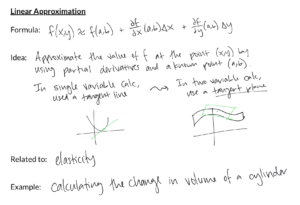Take a minute to visualize your students studying. What do you expect them to be doing? If you were to make a study guide for your students, what would it look like? What skills or processes do you expect to be automatic? What concept is usually the hardest for students? How do you classify content and draw connections among ideas?
In my mathematics courses, I receive many requests from students for “formula sheets” and “study guides”. This happens every semester, like clockwork, so last year I implemented a midterm exam wrapper to determine how my students prepare for exams. I was shocked to find out that some students study for math tests by just re-reading their notes. It was then that I realized the importance of modeling effective, discipline-specific study practices.
To be sure, there are scientifically proven good study habits (like minimizing distractions, getting enough sleep, testing yourself, teaching others the material, etc.) that we can all share with our students. But there are also practices that are especially effective for our discipline—and this is the subject of today’s blog post.
As an example, I’d like to share a few of the practices that I model and activities that I encourage students to do as they study for my calculus courses.
Revisit big ideas and classify course content. It’s easy for students to lose sight of the big picture and, as a result, students often struggle to see how topics are related. Before an exam, I dedicate 10-15 minutes of class time for reflection, recall, and the creation of a simple concept map.
Provide a fill-in the blank study guide. This is a great way to provide structure for student studying while still allowing for the benefits of note-taking. For each topic, I ask my students to fill in (i) the formula, (ii) the main idea, (iii) a connection to another concept, and (iv) an example problem.
Encourage repetition. For some computations and processes, practice makes perfect. I encourage my students to go back and work through old homeworks and quizzes with our concept map in mind and their study guide in hand. Not only does this promote proficiency and automaticity, but also metacognition.
Create a practice exam. This requires some extra work on my part, but is important for reducing test anxiety. Distributing a practice exam allows students to predict the structure, level of questions, and time constraints of the actual exam. And, of course, a practice exam is an opportunity for more practice.
As we approach finals week, I encourage you to think about what study practices are most effective for your discipline and to share them with your students.



